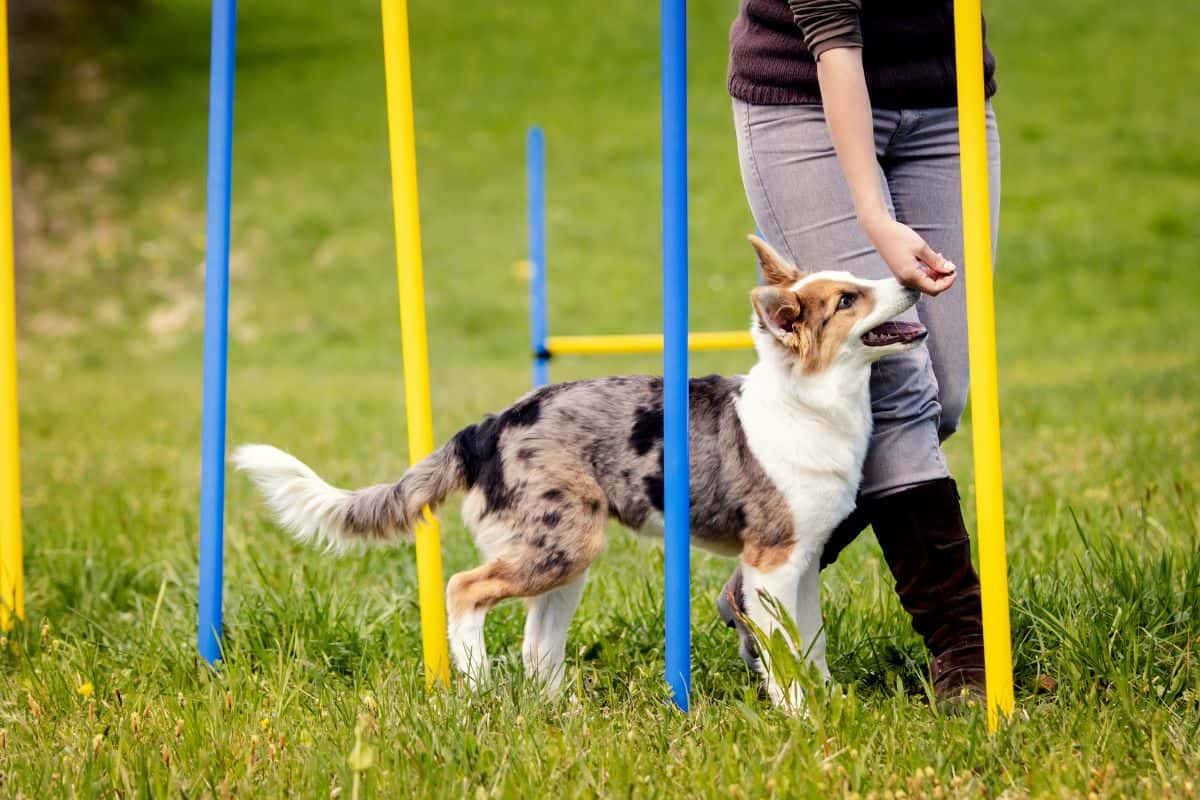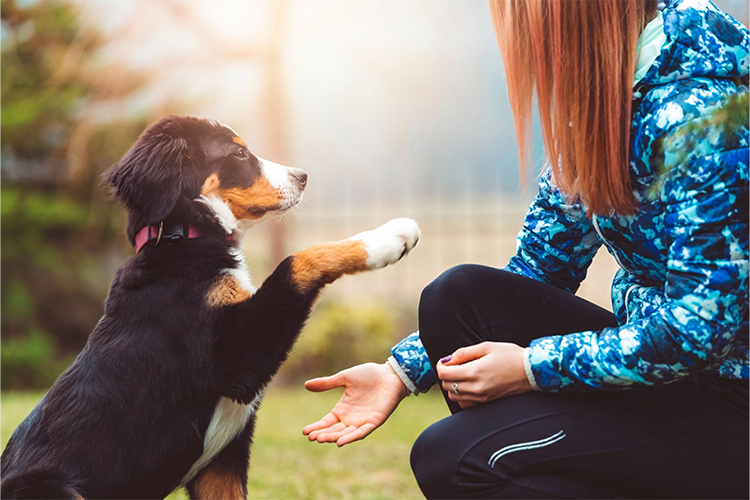The Ultimate Guide to Favorable Reinforcement in Dog Training
The Ultimate Guide to Favorable Reinforcement in Dog Training
Blog Article
Necessary Tips for Successful Dog Training: An Overview for Pet Dog Owners
Effective dog training is a multifaceted procedure that needs a strategic method customized to both the pet dog's temperament and the proprietor's goals. Trick parts such as establishing constant commands, using positive support, and helping with very early socializing play important duties in fostering a well-adjusted canine friend. Lots of animal proprietors come across obstacles that can hinder development, leading to disappointment and unpredictability. Understanding how to navigate these barriers can substantially enhance the training experience, eventually changing the partnership in between owner and dog. What are the important strategies that can be employed to make sure success in this endeavor?
Understanding Canine Actions
Recognizing pet dog habits is important for reliable training and cultivating a harmonious connection in between pooches and their owners. Pets interact mostly via body movement, vocalizations, and activities, making it important for owners to translate these signals precisely. Acknowledging a canine's position, tail setting, and ear orientation can supply understandings right into its emotion. As an example, a wagging tail does not always show joy; it can likewise signal exhilaration or anxiety.

Socialization plays a substantial role in pet actions; exposure to various atmospheres, people, and various other animals can considerably influence a pet's personality. Furthermore, elements such as breed features and specific character should direct training methods, as some breeds may have specific behavioral characteristics that necessitate customized strategies. By understanding these aspects, proprietors can create a helpful environment that encourages positive habits, resulting in successful training outcomes and a deeper bond with their family pets.
Establishing Consistent Commands
Reliable interaction with your canine begins with establishing consistent commands. This foundational element of training is critical for promoting understanding in between you and your pet dog. Uniformity in the commands you utilize ensures that your pet can dependably associate details words or phrases with the wanted habits.
When selecting commands, pick clear, distinct words that are simple to say and distinguish from one another. Avoid using similar-sounding commands that may perplex your pet dog. For example, using "rest" and "stay" is suitable, however "sit" and "hit" might lead to misunderstandings.
Furthermore, maintain the exact same tone and volume for each command. Dogs are sensitive to singing cues, so differing your tone can create complication.
It is just as vital to guarantee that all member of the family are on the same page pertaining to the commands used. A united front in command use will certainly protect against mixed signals and reinforce the knowing process.
Favorable Support Techniques
The power of positive reinforcement in pet training hinges on its ability to urge wanted behaviors through rewards and appreciation. This method is grounded in the principle that actions adhered to by positive outcomes are more probable to be repeated. By read more incorporating favorable support into your training routine, you can successfully shape your canine's actions in a constructive manner.
To execute positive support, it's necessary to recognize what inspires your canine, whether it be treats, playthings, or verbal appreciation. When your pet dog performs a desired activity, such as resting on command, immediately reward them with a treat or love. This association in between the command and the favorable outcome reinforces their understanding.
It's essential to timing the incentives appropriately; providing the reinforcement within secs of the preferred behavior aids your dog make the connection (dog training). In addition, consistency is vital-- ensure that all household members make use of the very same commands and reward systems to prevent complication

Gradually, you can decrease the frequency of deals with as your pet dog discovers the actions, transitioning to Bonuses commend or periodic rewards. This approach not just promotes a solid bond between you and your dog however also advertises a positive understanding setting, making training a pleasurable experience for both.
Socialization and Communication
Constantly exposing your dog to a selection of settings, individuals, and other pets is essential for their social advancement. Socialization ought to begin early, ideally during the vital window of 3 to 14 weeks, when young puppies are most receptive to new experiences. Older pet dogs can additionally benefit from continuous socializing efforts.
Present your pet dog to various setups, such as parks, pet-friendly stores, and city locations. This exposure helps them adjust to numerous stimulations, lowering anxiousness and anxiety reactions. Motivate favorable communications with various other canines and individuals, ensuring that these encounters are safe and regulated to cultivate self-confidence.
Make use of organized playdates with well-mannered canines, as this can boost your dog's social skills and educate them proper habits. Obedience classes and training sessions additionally supply exceptional possibilities for socializing, permitting your pet to communicate with others in a monitored setting.
Monitor your dog's body movement throughout communications, as this will help you gauge their comfort degree. Gradually enhance direct exposure to more difficult scenarios while guaranteeing that each experience declares. A well-socialized pet dog is a lot more likely to display balanced actions, making them a happiness to have in any setup.
Dealing With Common Training Difficulties
Every canine owner will certainly come across training challenges eventually, regardless of their canine's age or socializing level. Determining usual issues such as stubbornness, interruptions, and terror can help in creating efficient approaches for renovation.

Distractions throughout training sessions can thwart emphasis. To fight this, start training in a peaceful setting with very little stimulations. Progressively present disturbances as the pet becomes much more skilled in commands. Short, frequent training sessions are likewise efficient in preserving attention.
Terror can hinder a canine's knowing procedure. Gradual desensitization to the resource of fear, coupled with favorable reinforcement, can aid minimize anxiety. Persistence is vital; never compel a dog right into a situation that triggers distress, as this may worsen the concern.
Ultimately, understanding and addressing these typical obstacles with a structured method will promote a more productive training experience, enhancing the bond between dog and proprietor while advertising effective discovering.
Conclusion
In recap, effective canine training depends on a thorough understanding of canine behavior, the establishment of consistent commands, and the application of favorable reinforcement methods. Socializing plays an important function in developing well-adjusted family pets, while attending to common training difficulties requires persistence and adaptability. By applying these essential techniques, pet owners can cultivate a solid bond with their pet dogs and advertise desirable behaviors, ultimately leading to an unified relationship in between humans and their canine friends.
Understanding canine actions is crucial for effective training and fostering a harmonious look at this web-site relationship between canines and their owners.Socialization plays a substantial role in pet behavior; direct exposure to different environments, individuals, and various other animals can substantially impact a canine's temperament.The power of favorable reinforcement in canine training lies in its capacity to urge wanted actions with benefits and praise. By incorporating positive support right into your training routine, you can properly form your pet dog's actions in a useful way.
In summary, effective dog training relies on a thorough understanding of canine actions, the establishment of constant commands, and the application of positive reinforcement strategies.
Report this page